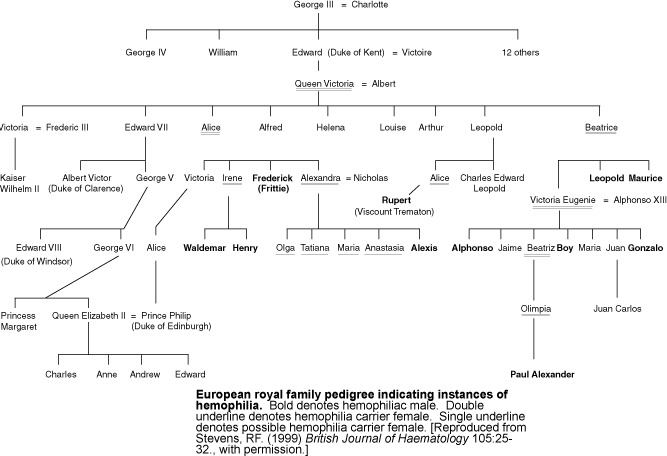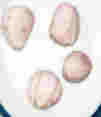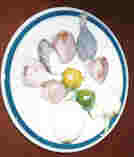Igbo Residence
The Igbo residential system follows a
patrilocal pattern: sons remain with their father after marriage, usually until his death. However, other aspects of social system are also expressed in the domestic organization and lead to a more complex structure and dynamic than those in a simple patrilocal system. The system of polygyny and the resulting bond between siblings descended from the same mother are particularly important.
In the traditional Igbo arrangement, men attemptto develop large households in order to gain prestige and influence within the community. A household head as such receives the important designation of
ezi, and the head of a “big compound” is considered a major leader in village affairs. As in the
Turkish system of patrilocality, the lifelong residential attachment of sons formed an important mechanism for increasing household size. However the Igbo utilize the additional principle of polygyny to substantially extend the capacity of their domestic unit. Unlike the Turkish system, a man’s second and subsequent wives remain resident in his compound to provide an expanded base for him to acquire dependents. Each is given a separate area within the larger structure in which they receive a hut for personal use and a surrounding area where their grown sons and daughters-in-law will eventually set up their own huts.The husband may have a separate hut, which is primarily used as a reception area, but he normally sleeps in one of his wives rooms according to a scheduled rotation.
Igbo Household Formation: Stage I
A is married to two wives (B and C) each of whom is assigned a separate hut within the compound where she lives with her children
Each wife’s complex forms a separate social and economic unit, as well as a spatial one. It is designated as an
umunne as apposed to the
umunna, which covers the larger compound. As sons are married they bring their wives into their mother's section of the compound and assign huts to them. If they marry more than one wife, each gets a hut of herown for herself and her children.
Stage II
A's sons marry and bring in their wives, each of whom is assigned a new hut.
His daughters move out as they marry.
Stage III
The same processes are repeated in the next generation
All the
umunna members cooperate in some joint tasks, usually the cultivation of “men’s crops”, including yams and oil palms. The “women’s crops” are the responsibility of each wife on her own. The head of the household shares the proceeds from joint production among his wives, but each woman is allowed autonomous control of her own produce and any income it yields. She will usually use her resources to provide for her own children within the
umunne, for whom she holds the primary care and feeding responsibilities. The separate status of the
umunne was also important for the unity of full siblings, which forms the basis for the dynamic of household segmentation.
At the death of a compound head, his sons can reorganize the domestic group in a number of ways. The assets can be divided among all the brothers, each of whom will establish a new unit. However, at least some of them will often remain together. On occasions half-brothers are able to cooperate and leave the unit completely intact under the leadership of the eldest, the
okpara, the father’s main heir. More often, a group of full brothers, who constitut a single
umunne, separate from the other full sibling groups within the compound. The senior branch, headed by the okpara would usually occupy the existing homestead and the others would general be responsible for founding new ones.
Household Segmentation
In this scenario, the new domestic unit begins from a different base than the one first introduced. A group of brothers (only 2 in the diagram) and their wives, rather than a single person, now form the elder generation. The first-born brother assumes the title of
ezi and the corresponding ritual, political, and economic rights and responsibilities. He holds authority over his junior brothers and their children as well. Subsequent generations develop by accretions through marriage and patrilocal residence, as the same way as a household started by a single individual.
Growth in a Segmented Household
Note that E's sister's son has joined his household, an exception to the patrilocal rule that can occur in Igbo society.
The structure of polygyny and sibling unity in traditional Igbo society create households that are quite different in size, organization, and dynamics than the
Turkish patrilocal pattern. They are larger with a more complex internal structure. For particularly prominent men, their scale can be increased even further through the addition of sister’s sons, with whom they maintain a special relationship, slaves, and other economic dependents such as apprentices and the number of residents could exceed a hundred.
Household dynamics also has an implication for those of the wider descent system. Typical domestic division between groups of full brothers established the basis for
segmentation within the lineage system. As a separate compound, each sibling group would become a new minor lineage. (Paradoxically, this patrilineal segment is actually establish by descent from a female ancestor.) All of the new compounds that formed from the defunct one would become constituted as a new major lineage.
The contrast between Igbo and Turkish patrilocal patterns are representative of general differences between the African and Eurasian social orders. It can in part be explained according to differences in the basic conditions of tribal and peasant societies. In the former case, the open availability of land and the land intensive production regime put a premium on the direct domestic control of labour. Accordingly, large households tend to form. The only limit to their size is the complexity of managing them, which is partly met by the Igbo system of delegating responsibility to domestic sub-units. In the later case, land is in short supply and households have fixed allotments that cannot be expanded. Accordingly, domestic units cannot growth beyond a fairly low threshold.













